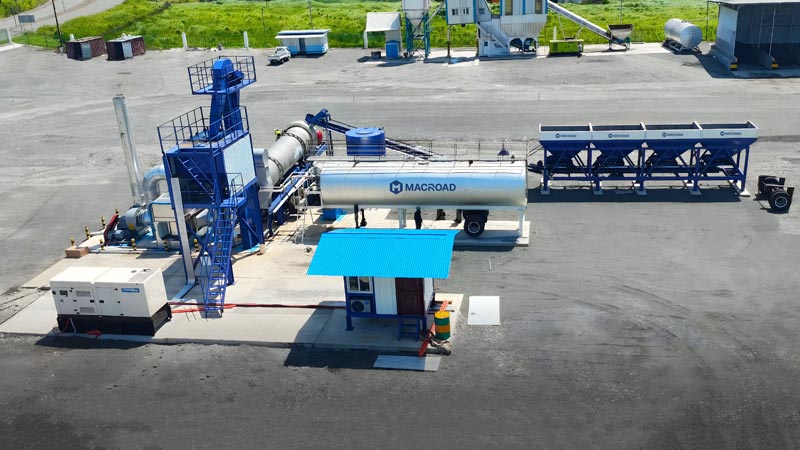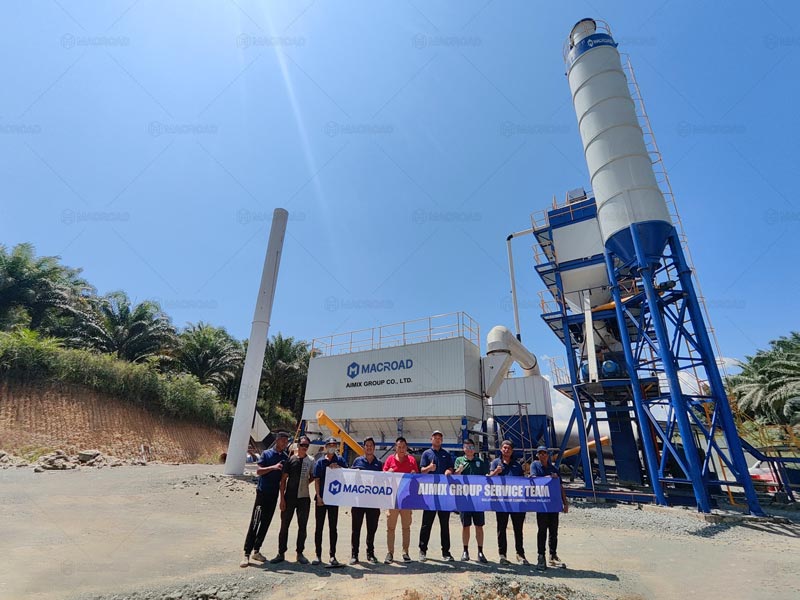
In the rapidly growing road construction industry, the choice of equipment can make or break a project. Small asphalt plants, particularly mini asphalt plants, have become a go-to solution for many contractors looking to enhance project efficiency without the high overhead costs of large-scale equipment. However, as with any capital investment, understanding the return on investment (ROI) is crucial to ensure that the purchase contributes positively to long-term profitability. This article explores how small asphalt plant equipment can transform capital into profit by analyzing the key factors affecting ROI and offering strategies for maximizing returns.
When considering the purchase of small asphalt plant equipment, it’s essential to evaluate both the short-term and long-term financial benefits. The most commonly used types in the market today are drum mix asphalt plants and mini asphalt plants(mini planta asfáltica), each offering distinct advantages. The ROI for these plants can vary based on multiple factors, including initial investment, operational costs, and market conditions. To ensure a positive ROI, contractors need to consider these factors carefully.

The initial cost of acquiring a mini asphalt plant is significantly lower than that of larger, more complex plants. This affordability makes mini asphalt plants an attractive option for small and medium-sized contractors looking to expand their operations without incurring excessive debt.
When evaluating the asphalt plant price(precio de planta de asfalto), contractors must also account for the costs of transportation, installation, and setup. For example, while a mini asphalt plant may have a relatively low upfront cost, transportation and installation fees can vary depending on location. However, even with these additional costs, the ROI remains strong due to the plant’s lower initial capital expenditure compared to larger plants.
For contractors in regions with high demand for small-scale production, such as local road projects, mini asphalt plants can start generating revenue much sooner, which reduces the payback period.
Once a mini asphalt plant is operational, the key factors contributing to operational costs are fuel, labor, and maintenance. Drum mix asphalt plants, which are known for their efficiency in asphalt production, tend to have higher fuel consumption, but they offer consistent and high-quality production. Contractors should evaluate the expected fuel costs and find ways to optimize consumption, such as using energy-efficient burners or reducing idle times.
Labor costs are another consideration when operating small asphalt plants. Mini asphalt plants typically require fewer operators than larger plants, reducing labor expenses. Additionally, the ease of use and automation in modern plants help to minimize the need for specialized skills, reducing the overall cost of labor.
Routine maintenance is necessary to keep any asphalt plant running smoothly. However, mini asphalt plants generally require less maintenance than larger counterparts due to their simpler design. With fewer moving parts and a smaller scale of operations, maintenance costs are usually lower, contributing to better overall ROI.
Another important factor influencing ROI is the production capacity of the asphalt plant. Mini asphalt plants typically offer lower output compared to larger drum mix asphalt plants, making them ideal for smaller projects or operations that do not require high production volumes. However, this can also mean that contractors need to operate at a higher utilization rate to maximize returns.
In regions where there is a constant demand for small batches of asphalt for local projects, the capacity of a mini asphalt plant can be highly beneficial. The flexibility to scale production based on project needs allows contractors to meet market demand efficiently without investing in unnecessary infrastructure.
The location of the project also plays a critical role in ROI. For example, smaller plants may be more effective in rural or remote areas where transporting asphalt from large central plants would incur high logistical costs. By producing asphalt closer to the job site, contractors can significantly reduce transportation costs, which contributes to a faster ROI.
While the initial investment for mini asphalt plants is low, ongoing maintenance plays a significant role in the overall profitability. Drum mix asphalt plants are typically built for durability, but they still require regular maintenance to ensure smooth operation. Regular maintenance checks, such as monitoring wear on drum components and ensuring proper lubrication, can help prevent costly breakdowns and extend the plant’s operational life.
Mini asphalt plants generally have fewer components to monitor, which lowers the likelihood of mechanical failure and the associated costs. Moreover, many mini plants come with extended warranties or service packages that can reduce maintenance-related expenses.
It is essential to factor in the plant’s longevity when evaluating ROI. A well-maintained plant with a long operational life offers a greater return, as the initial investment is spread over a longer period.
Now that we have discussed the key factors that affect ROI, let’s explore strategies for maximizing returns on small asphalt plant investments.
Maximizing the efficiency of the asphalt plant can dramatically improve ROI. This includes ensuring that the plant operates at full capacity during peak demand periods, reducing downtime, and minimizing waste. Additionally, operators should utilize technology such as automated controls and sensors to monitor plant performance and adjust operations in real time.
For mini asphalt plants, targeting local and regional projects is a key strategy for maximizing ROI. By establishing the plant near high-demand construction zones, contractors can reduce transportation costs, which can often account for a significant portion of the total project expenses. Local projects also tend to have shorter timelines, which enables the plant to complete more jobs in a shorter period.
To further maximize the ROI of a mini asphalt plant, contractors can consider upgrading the plant or expanding operations with additional equipment. For example, adding a cold feed system or a mobile storage unit can increase the plant’s production capacity and flexibility. This allows contractors to meet the needs of larger projects without the expense of purchasing a new, full-sized asphalt plant.
Quality control is another important factor in ensuring a solid ROI. Consistently producing high-quality asphalt not only meets the demands of customers but also improves the plant’s reputation, leading to repeat business and potential referrals. Implementing effective quality control systems, such as using reliable testing equipment and employing experienced technicians, can help maintain the plant’s output quality.

Small asphalt plant equipment, especially mini asphalt plants and drum mix asphalt plants(planta de asfalto continua), provides an efficient path for converting capital investment into profit. By understanding and managing factors such as asphalt plant price, operational costs, market demand, and maintenance, contractors can optimize their ROI and achieve long-term profitability.
Investing in small asphalt plants offers contractors a competitive edge in the road construction industry, particularly in local markets where smaller-scale operations are in high demand. By focusing on efficiency, targeting regional projects, and maintaining high standards of quality control, contractors can transform their initial capital investment into a consistent and profitable return.